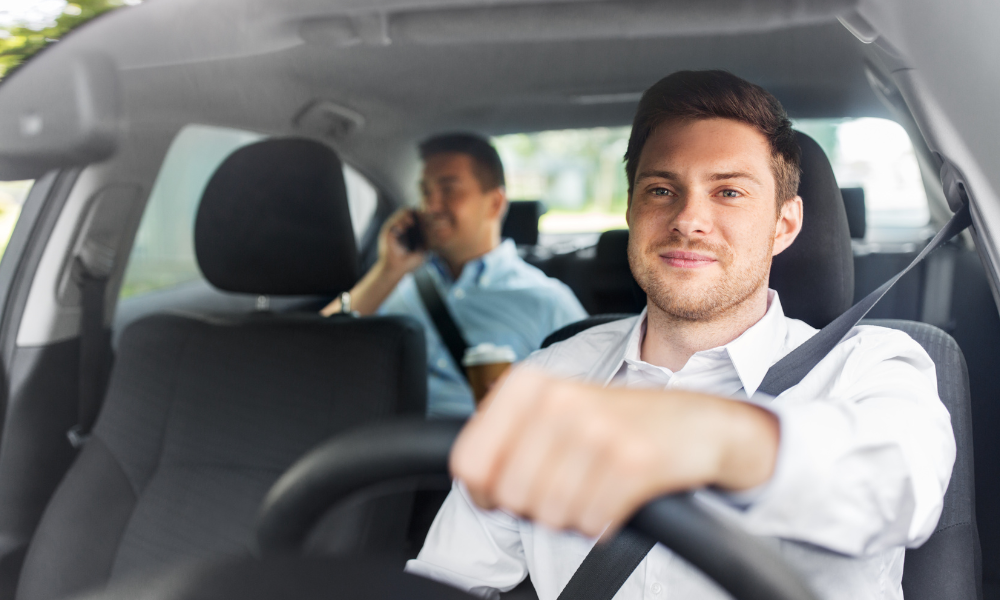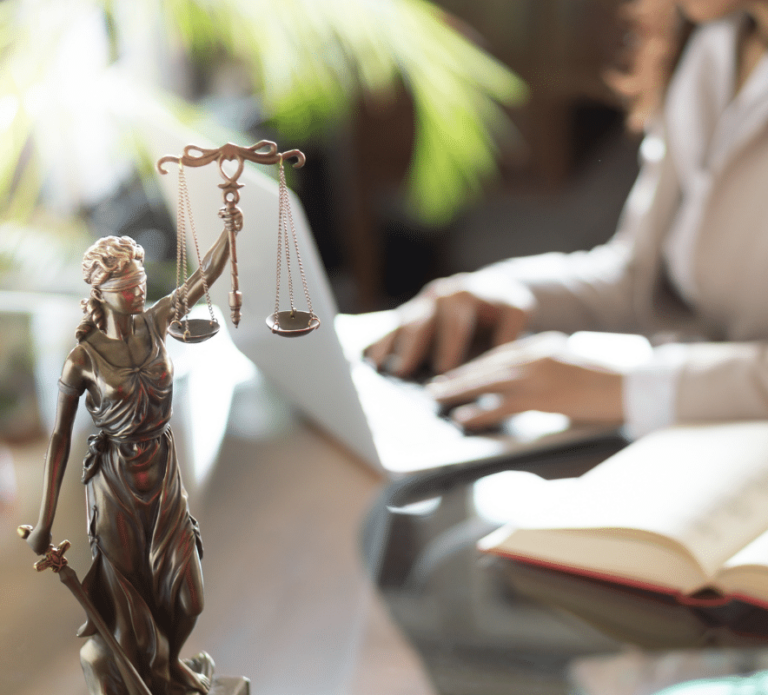Uber and Lyft Safety Tips


Have you experienced sexual assault or abuse?
We can help answer your questions and connect you with an attorney if you may have a case.
"*" indicates required fields

Author: Kathryn Kosmides
Survivor Advocate

Reviewed By: Melissa Reitberg
Uber Sexual Assault Attorney
- Ensure the arriving car matches the description in your app, including color, make, model, and license plate. Review the driver’s profile, rating, and photo prior to entering the vehicle.
- Confirm your driver’s identity by asking who they’re picking up. Don’t say “are you picking up [insert your name]?”. Instead, ask who they’re picking up or what their name is if you feel that is a better option.
- When you enter the vehicle, roll down the window enough to where you can get your arm out the window to open the door from the outside if needed. You can call someone during the ride if you are uncomfortable and always trust your instincts.
Rideshare Safety Overview
Uber and Lyft are two of the most popular ridesharing companies, connecting millions of passengers with drivers every day who use their private vehicles to provide transportation on demand. Even though millions of people use ridesharing as an alternative to public transportation or taxis, over 10,000 people in the US have experienced sexual abuse, assault, or harassment as rideshare passengers and drivers.
Although each company has hiring policies and safety guidelines for drivers and passengers, accidents and assaults still happen. Rideshare companies run background checks when a person applies and at least every year — but background checks in the United States have many flaws, including in certain jurisdictions only being able to show convictions less than seven years old.
- Rideshare Safety Overview
- Is Uber Safe? Is Lyft Safe?
- Potential Rideshare Safety Risks You Should Know About
- Safety Tips for Using Uber and Lyft as a Passenger
- Safety Tips for Using Uber and Lyft as a Driver
- Steps to Take if You Experience Rideshare Abuse or Assault
- File a Rideshare Sexual Abuse Lawsuit Against Uber or Lyft
- Rideshare Safety Tips FAQs
- Want To Speak With A Lawyer?
Is Uber Safe? Is Lyft Safe?
Tens of millions of rideshare trips are made each day and safety is paramount for both riders and drivers in the interaction. To try to help both passengers and riders remain safe, rideshare companies are constantly adding additional safety features to their apps.
Uber has released three US Safety Reports – the first for 2017-2018, the second for 2019-2020, and the third for 2021-2022— which show thousands of severe safety incidents happening every year.
According to Uber’s second US Safety Report, they reported the following statistics related to sexual abuse, harassment, and assault for 2021-2022:
- 338 reports involving non-consensual kissing of a non-sexual body part
- 1,401 reports involving non-consensual touching of a sexual body part
- 338 reports involving non-consensual kissing of a sexual body part
- 285 reports involving attempted non-consensual sexual penetration
- 335 reports involving non-consensual sexual penetration
While Uber claims sexual assaults decreased by 5% between their first and second US Safety Reports, overall rideshare usage dropped up to 75% in 2020 due to the COVID-19 pandemic.
Lyft has released two US Safety reports, for the years 2017 through 2019, and a second for the years 2020-2022; which documented the following data:
- 112 reports of non-consensual kissing of a non-sexual body part
- 450 reports of non-consensual touching of a sexual body part
- 121 reports of non-consensual kissing of a sexual body part
- 110 reports of attempted non-consensual sexual penetration
- 106 reports of non-consensual sexual penetration
In response to these sobering statistics, both Uber and Lyft initiated new programs, such as the Industry Sharing Safety Program. This program shares information about sexual predators with other rideshare companies, reducing the chances that another rideshare company will hire these individuals.
Uber also added more safety features to its app, including a PIN verification system that prevents riders from getting into the wrong vehicle. Uber also now offers emergency services through the app and added an audio recording feature riders may employ if they feel unsafe. Lyft, too, initiated over a dozen new safety features in 2019 alone and most recently launched Women+ Connect which is a new feature for women and nonbinary drivers that they can turn on to increase their chances of matching with more women and nonbinary riders in September 2023.
So are rideshare apps safe? Each year, rideshare companies help facilitate over a billion rides across the United States. While there is a small chance at harm happening, the devastating effects it can have on someone’s life is immense. So if you’re going to use rideshares, you should understand what to look out for and how to keep safe.
Potential Rideshare Safety Risks You Should Know About
Any type of vehicle transportation carries some risk. Accidents can happen even for the most cautious drivers. However, for both drivers and passengers, some risks are unique to ride-sharing.
Safety Risks for Rideshare Passengers
- Having someone else pick you up than driver listed in the app
- The car having a different license plate
- The car being a different make/model/color than listed in the app
- Companies who own fleets of rideshare cars not background checking drivers
- Drivers with old violent criminal histories passing background check
- Drivers with criminal histories undetected by background checks
- Drivers with lapsed insurance in case of accident
- Drivers who have been reported but haven’t been removed from the platform yet
Safety Risks
for Rideshare Drivers
- Road safety and car crashes
- Unpredictable or intoxicated passengers, especially late at night
- Low-rated passengers causing frustration or dangerous situations
- Passengers who escalate conversation to verbal sexual harassment
Rideshare drivers are considered independent contractors, and rideshare companies typically perform a background check before allowing a driver to participate in the app. However, a 2018 report found that some people who had violent criminal convictions were still hired as rideshare drivers.
Drivers and riders are both encouraged to use caution when engaging with ridesharing services. The safety tips below can help ensure that rideshare participants are kept safe and not placed in uncomfortable situations.
Safety Tips for Using Uber and Lyft as a Passenger
Most rideshare drivers are good people who are looking to provide a high-quality experience to their passengers. However, occasionally, drivers are bad actors who have other intentions. These rideshare safety tips are designed to help passengers understand the red flags and what they can do to help keep themselves safe.
1. Verify the Specifics of the Vehicle
After you confirm your ride through the app, make sure the car that arrives to pick you up matches the description of the ride you booked.
Check the color, make, and model of the vehicle and also the license plate all match the one listed for your driver. This helps in busier cities where many cars look alike and many drivers are competing for rides. If anything is amiss, you should cancel the ride even if the driver insists they are your ride.
2. Review the Driver Profile
The individual who picks you up should be the same person listed in the app. If it states your driver is supposed to be female but a male is picking you up, this is a major rideshare safety red flag.
One way to ensure the driver is who they say they are is instead of asking who they’re picking up you can ask what their name is.
Drivers for Uber and Lyft are rated on a scale of one to five, with five being the highest. When you accept a ride, the driver’s photo and rating appear. While Uber and Lyft both state that they remove low rated drivers from the platform, sometimes the process is delayed. It could also take time before a poor driver hits the threshold for removal.
If something about the driver’s appearance or vehicle seems off, or if you don’t want a lower-rated driver, don’t be afraid to cancel the ride.
3. Confirm That You Are the Passenger
Never state your name first, as a predator could be posing as a rideshare driver and simply respond yes regardless of if they are there to pick you up or not. Instead, ask the driver who they’re here to pick up, so you can confirm it’s the right driver. This process helps improve driver accountability and reduces confusion for passengers.
4. Travel with a Friend or use Ridepooling Option
It’s always best to have the support and protection of a friend. When you’re using a ridesharing service, try to travel with someone else, especially if going a long distance. If you are not out with a friend or are going very different directions, you can also often use the ride pooling or car sharing option which enables other passengers to be picked up along the route.
However, passengers often need to ride alone. In these cases, use the “share status” option in your app so that friends, family, or the people you’re meeting can track your progress. Make sure you let someone know your destination and check-in through a text or phone call once you’ve safely arrived, especially if you’re traveling a long distance, you are under the influence, or it is late at night.
5. Always Roll Down Your Window
Whenever you enter a rideshare, even if it is winter or late at night, you should roll down the window enough to get your arm out of the window if needed.
This is because bad actor drivers can deploy child locks on the doors, meaning you won’t be able to open it from the inside, essentially trapping you in the vehicle. By rolling down the window on every ride, you can ensure that if you need to escape by opening the door handle from the outside, you can.
6. Video or Audio Record
If you are already in the vehicle and the driver starts acting inappropriately, you can pull out your phone and start recording the drive. We recommend being covert about this versus announcing “i’m recording you” as this could agitate the driver and cause more harm.
You can also you in-app or external safety features that enable you to discreetly contacting emergency services if needed.
7. Follow Your Gut Instincts
Many individuals will state feeling like something was amiss or strange prior to any type of safety incident happening. But, oftentimes individuals suppress this feeling because they might believe they’re overreacting or being paranoid. However, we always believe that if your body is telling you something feels off, it likely is — and it’s better to be safe than experience something dangerous or traumatizing.
If you are already in the vehicle and do not like how the driver is acting, you can ask them to pull over or drop you off somewhere closer like a restaurant, bar, or friend’s house. You can also pretend to be sick and tell them you need them to pull over immediately. Once pulled over, you can get out of the car and refuse to get back in and get to safety such as going into an open business.
You deserve to feel safe and comfortable in a rideshare as a passenger. If harm does happen to you, you have rights and options including contacting the company, filing a police report, and potentially filing a lawsuit against the rideshare company for the harm that happened to you.
Safety Tips for Using Uber and Lyft as a Driver
If you are a driver for Uber, Lyft, or another rideshare company, you also face potential safety risks. For drivers, it can be completely unpredictable what type of passenger you will get, especially if you are driving in a large city, picking up from an airport, or driving late at night.
Here are the top rideshare driver safety tips we’ve uncovered from experts and previous drivers
Plan Ahead for Different Scenarios
Think About Installing a Camera in Your Vehicle
Don’t Take a Passenger if You are Suspicious
Drive in Safer Areas & Screen Rideshare Destination
If you are a woman, young, or any other demographic that is in general more susceptible to gender-based violence, you should proactively take safety precautions. While this is unfair, it is reality and drivers should take safety precautions and feel they can report if and when something does happen – whether to the platform or law enforcement.
Steps to Take if You Experience Rideshare Abuse or Assault
You have different rights and options after experiencing rideshare sexual abuse, assault, or harassment. Your three main reporting options are:
- Report to the Rideshare Platform
- Report to Law Enforcement
- File a Civil Claim Against Rideshare Platform
Below we’ll discuss each of these reporting options in detail and as a survivor, you have the right to do whatever you believe is best for you.
Report to The Rideshare Platform
Every rideshare app has its own procedures and policies for reporting incidents, which is why it’s crucial to write down what you remember independently by yourself prior to filing the report.
This ensures you provide all necessary information when reporting and capture the important details. You want to make sure you screenshot any ride information, what you remember, the date/time it happened, and where it happened.
From there, familiarize yourself with the company’s reporting process and policies. Consider recording your screen while filing the report on the app/platform and attach all relevant documents, such as a police report if you have already filed one. Typically, individuals report to the platform first and then file a police report, often after consulting with an experienced rideshare sexual assault law firm who can help guide them through this process.
To report an incident with Uber, you can follow these steps:
- Go to the Uber app.
- Tap “Help”.
- Tap “Help with a trip,”.
- Pick the trip during which you were assaulted.
- Tap “Report safety issue” on the “Trip details” page.
- Then, tap “Report a safety incident involving a driver” and write your complaint. You can also tap “call support” at the bottom of the “Help” page to call Uber.
To make a report with Lyft, follow these steps:
- Go to your Lyft app.
- Tap the menu icon in the top left corner.
- Tap “Ride history.”
- Select the ride during which your sexual assault occurred.
- Tap “Get Help” (on iOS devices) or “Request Review” (on Android devices). This will direct you to a chat with Lyft’s help bot, which will connect you with a representative.
- Select “Report driver behavior.”
- Select “Unsafe or Threatening Behavior.”
The platform may or may not respond to your report, so it’s important to document any future interactions with the rideshare company, including phone calls or emails. Try to get as much information in writing as possible, and if there are phone calls, you have the right to record them (check your local state laws for if you must notify them you are recording the call).
Report to Law Enforcement
Deciding to report sexual abuse to law enforcement is a deeply personal choice. However, in cases of rideshare sexual assault, reporting to the authorities is a crucial step to help prevent future incidents and hold the rideshare company accountable.
Law enforcement takes these cases seriously, and filing a report creates an essential record, especially if you decide to pursue a legal claim or lawsuit against the rideshare company. Without a report to law enforcement, your ability to file a legal claim can significantly diminish.
You can have a trusted person accompany you to make the report, and you can call ahead to find out when their gender-based violence officers are available if you prefer speaking with someone specifically trained in handling such cases. The sooner you report the incident to law enforcement, the better. Additionally, you can reach out to a law firm that specializes in supporting survivors of rideshare sexual assault before filing a report, and they can assist you with the process.
It’s important to note that individuals cannot press criminal charges themselves; that is the responsibility of the state prosecutor. When you file a police report, you are acting as a witness to a crime, and you should not feel guilty for reporting the harm that happened to you.
File a Rideshare Sexual Abuse Lawsuit Against Uber or Lyft
It is estimated that tens of thousands of individuals have experienced sexual assault while using a rideshare service like Uber or Lyft just within the United States. The legal firms representing these survivors base their claims on the assertion that Uber and Lyft failed to meet their duty of care obligations to their users in three main areas:
- Poor Hiring and Vetting of Drivers: Despite performing background checks, individuals with histories of violent sexual behavior can still become drivers. Background checks have well-known limitations and can miss up to 97% of gender-based violence perpetrators as they often don’t allow for the reporting of arrests (only convictions) and can not report offenses older than seven years. So, in 2024 if someone sexually assaulted someone in 2016, a background check may not report the offense based on local laws.
- Deceptive Marketing: Some victims are suing Uber for deceptive marketing practices that create a false sense of safety, despite the flaws in screening procedures for drivers.
- Lack of Monitoring or Oversight of Drivers: There are lawsuits against Uber for failing to monitor its drivers during trips and throughout their employment with the company, including a lack of in-car cameras and insufficient in-app safety reporting and support.
Both Uber and Lyft have faced criticism for not doing enough to protect riders and drivers from sexual abuse, assault, and harassment over the last decade. The companies have tried to deny liability in these cases, claiming that their drivers are not employees and that they have taken steps to mitigate harm to both drivers and passengers.
The process for filing lawsuits against ridesharing apps differs for Uber and Lyft sexual assault survivors. In October 2023, the Judicial Panel on Multidistrict Litigation (JPML) agreed to consolidate all pending and any future federal Uber sexual assault cases in federal courts into a Multi-District Litigation (MDL), assigned to Judge Charles Breyer in the Northern District of California.
As of March 2024, there are over 200 active cases under the MDL, and Helping Survivors is collaborating with leading law firms working on the Uber MDL. The case so far outlines the common allegations and legal claims brought forth by plaintiffs across the separate lawsuits, arguing that Uber prioritized rapid expansion and profits over passenger safety, neglecting to adopt stricter safety measures like in-car cameras and enhanced background checks.
Lyft sexual assault lawsuits remain independent from each other, although the increasing number of claims filed in recent years may prompt the courts to consider consolidation.
Regardless of whether the rideshare sexual assault occurred in an Uber or a Lyft, an experienced law firm can guide survivors through the steps they can take next, regardless of where they are in the process. We can help you get in touch with a local rideshare sexual abuse lawyer who can help you seek justice and healing.
The steps to file a lawsuit against a rideshare company for sexual assault include:
- Document Your Experience – Write down everything you can remember and take screenshots of any evidence related to the ride.
- Speak with an Attorney – It’s advisable to consult an experienced rideshare sexual assault attorney as soon as possible to guide you through your rights and options.
- Review & Sign with Law Firm – Law firms typically take these cases on a contingency basis, meaning they are compensated once there is a settlement or you win the case in court. This arrangement doesn’t require any upfront payment, and most states have standard percentages that law firms can take.
- Law Firm Files Claims Against the Rideshare Company – Depending on the state you are in, there may be different steps to file a claim against the rideshare company. The law firm will handle all of this work so you can focus on your recovery.
- Responding to Court Summons – If any court appearances or filings are required, your attorney will manage these, and you will likely not need to attend.
- Discovery Process – This is the process of gathering evidence and information related to the harm that occurred and what information the rideshare company does or does not have, such as the driver’s background check results.
- Settlement Negotiations or Trial Proceedings – Once the discovery is complete, both sides will come together to discuss a settlement, or the case will proceed to a hearing.
The statute of limitations determines how long the state has to press criminal charges and how long you have to file a lawsuit against the rideshare company, so speaking to a professional personal injury attorney who specializes in these types of cases as soon as possible is important.
You can file a claim even if you were assaulted while traveling outside of your home state.
Additionally, your information can typically be kept confidential during this entire process, meaning that the public and those around you do not have to know the details of your experience or that you filed a claim.
Rideshare Safety Tips FAQs
The safety of Uber, Lyft, or any rideshare service is a personal assessment. While the number of incidents is relatively low compared to the overall number of rides, any negative experience can be devastating. That’s why we recommend always utilizing the above rideshare safety tips to stay as aware and safe as possible, which can help reduce the chances of something happening. However, if an incident does occur, it’s important to remember that it is not the victim’s fault, and there are resources and support available to help.
You can report the incident to the platform at any time after it occurs, but it is advisable to do so as soon as possible. The ability to prosecute the case in criminal court depends on the statute of limitations in the state where the incident occurred. Reporting and contacting an experienced lawyer promptly can be crucial in seeking justice.
The timeframe for filing a sexual assault lawsuit against a rideshare company is determined by the civil statute of limitations in the state where the incident took place. It is important to consult with an experienced attorney immediately, even if you think the statute of limitations may have expired.
The settlement amount for a rideshare sexual assault case varies based on the specifics of the incident. An experienced law firm can evaluate the facts surrounding your experience and share more information.
An experienced attorney can help keep your information confidential when filing a rideshare sexual assault claim, though this may depend on the jurisdiction. In most cases, measures can be taken to prevent your information from becoming public.
If you have questions about your rights and options following any form of rideshare abuse, assault, or harassment, you can reach out to Helping Survivors. We can connect you with the best organizations, resources, and law firms to provide the support and assistance you need and deserve.
Want To Speak With A Lawyer?




